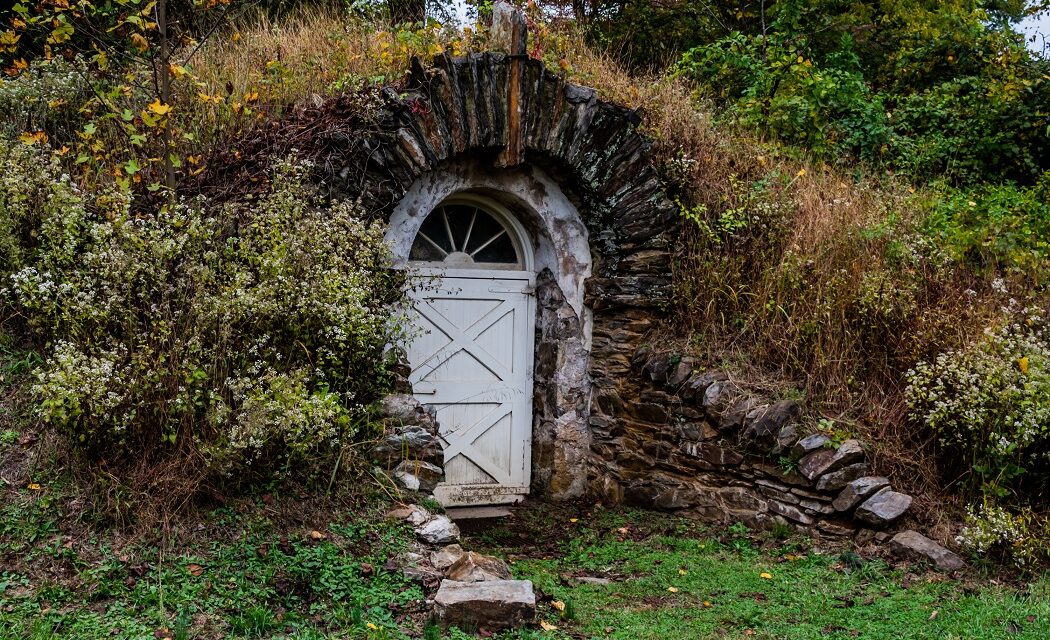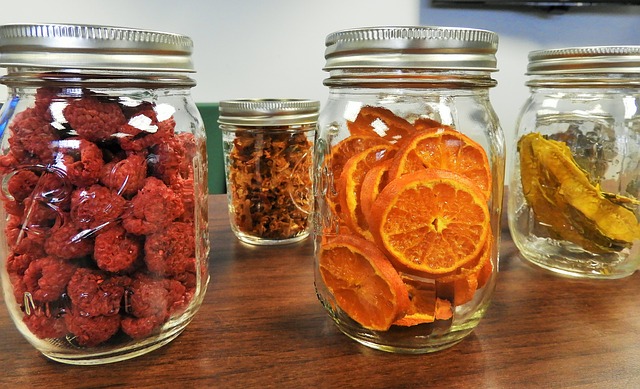In the realm of preparedness and self-sufficiency, few measures can compare to the practicality and long-term benefits of building a root cellar. This age-old method of food storage, steeped in tradition yet remarkably relevant in today’s world, serves as a reliable safeguard against unexpected circumstances.
Imagine a space, right in your backyard, that harnesses the earth’s natural insulation to preserve your harvests. A root cellar not only extends the shelf-life of your fruits and vegetables but also reduces reliance on artificial refrigeration.
As we delve deeper into the art and science of root cellaring, you’ll discover its potential to transform your approach to food storage and overall preparedness. Join us as we explore the steps of constructing a root cellar, the ideal conditions for various produce, and the immense satisfaction of self-reliance. Your journey towards a more resilient lifestyle starts here.
Why Build a Root Cellar?
 A root cellar can be a vital asset for those seeking to enhance their preparedness for unexpected circumstances. Primarily, it serves as a natural storage method for preserving various types of food. The cool, stable temperatures and high humidity levels inside a root cellar create an ideal environment for storing fruits, vegetables, and other perishable items. This allows for extended shelf life, reducing the risk of food wastage and ensuring a steady supply of fresh produce even in off-season periods.
A root cellar can be a vital asset for those seeking to enhance their preparedness for unexpected circumstances. Primarily, it serves as a natural storage method for preserving various types of food. The cool, stable temperatures and high humidity levels inside a root cellar create an ideal environment for storing fruits, vegetables, and other perishable items. This allows for extended shelf life, reducing the risk of food wastage and ensuring a steady supply of fresh produce even in off-season periods.
Furthermore, building a root cellar contributes to self-sufficiency. In the event of a power outage or a disruption in supply chains, a well-stocked root cellar can provide a reliable source of nourishment. It eliminates the dependency on electric refrigeration and supermarkets, offering peace of mind in times of uncertainty.
Building a root cellar also offers economic benefits. By storing homegrown or locally sourced produce, you can save significantly on grocery bills. Moreover, it reduces the energy costs associated with conventional refrigeration methods.
In addition to these practical benefits, a root cellar can also be seen as a sustainable choice. It utilizes the earth’s natural insulation, requiring no additional energy input for maintaining optimal storage conditions. This makes it a green alternative to electric-powered storage methods.
In terms of construction, a root cellar can be built using simple materials and techniques, making it a feasible project for DIY enthusiasts. It can be a standalone structure or incorporated into an existing building, offering flexibility in design and placement.
Ultimately, building a root cellar is a strategic move for those seeking to enhance their preparedness, promote self-sufficiency, and adopt a more sustainable lifestyle.
What is a Root Cellar?
A root cellar is a structure, often subterranean, used for storing vegetables, fruits, nuts, or other foods. Its purpose is to maintain temperature, humidity, and other conditions that help prolong the life and preserve the quality of produce. Root cellars have been utilized for centuries and are making a comeback as more individuals seek sustainable and self-sufficient living methods.
Building a root cellar is a practical step towards preparedness. It provides a cool, dark, and humid environment perfect for storing a variety of crops. This can be particularly beneficial in times of emergency, where access to fresh produce may be limited.
A few things to consider when building a root cellar for preparedness include:
- Location: It’s best to choose a spot with good drainage and easy access.
- Size: The size of the root cellar will depend on your storage needs.
- Materials: Common materials used include wood, stone, and earth.
Moreover, a well-designed root cellar can help reduce reliance on refrigeration, thus saving energy. It also allows for the enjoyment of homegrown produce year-round, contributing to healthier eating habits.
In the face of uncertain times, a root cellar serves as a practical and cost-effective solution for food storage. It’s a testament to the wisdom of our ancestors and a valuable tool for modern-day preparedness.
How to Build a Root Cellar?
A root cellar is a practical solution for anyone considering preparedness strategies. It is a low-cost, energy-efficient way to store food supplies, particularly fruits and vegetables, throughout the year. Here are a few steps to build one:
1. Location Selection: Choose a well-drained area with a slight slope. The location should ideally be north-facing to keep the cellar cool during summer.
2. Design and Size: The design of your root cellar will depend on your needs. A walk-in cellar is ideal for large-scale storage while a box-type cellar is suitable for smaller quantities.
3. Construction: Dig a hole that is slightly larger than your intended cellar size. Line the hole with insulation material like straw or polystyrene to maintain a consistent temperature.
4. Ventilation: Proper ventilation is crucial to prevent the build-up of harmful gases. Install a PVC pipe for air inflow and another pipe for outflow.
5. Shelving: Install shelves or bins for storage. Remember to keep different types of produce separated to prevent cross-contamination.
Building a root cellar is a proactive step towards preparedness. It not only ensures a steady supply of fresh produce but also fosters sustainability and self-reliance. A well-constructed root cellar is a valuable addition to any homestead, providing peace of mind and food security.
Get a FREE SUBSCRIPTION
Best Location for a Root Cellar?
When considering building a root cellar for preparedness, location is crucial. The ideal location is a north-facing slope, which offers natural insulation and protection from the sun’s heat. A root cellar built into a hillside provides superior temperature control, maintaining a consistent cool temperature ideal for storing fruits, vegetables, and canned goods.
Another option is to build your root cellar underneath your house. This option offers easy access but requires careful consideration of drainage and ventilation. A root cellar in a basement must be well-insulated to maintain optimal temperatures, and you’ll need to ensure that it’s sealed off from pests.
If you don’t have a hillside or a basement, you can still build a root cellar in your backyard. The key is to make sure it’s well-insulated and buried deep enough to take advantage of the earth’s natural coolness.
Here are a few factors to consider:
- Soil type: Sandy or loamy soil is ideal for drainage.
- Water table: The cellar should be above the water table to avoid flooding.
- Accessibility: Ensure easy access to your house, especially during harsh weather conditions.
Remember, the location of your root cellar plays a significant role in its effectiveness. It’s a critical aspect of preparedness planning, ensuring you have a sustainable food storage solution in case of emergencies.
Ideal Temperature for a Root Cellar?
When considering building a root cellar for preparedness, the temperature is a crucial factor. A root cellar serves as a natural refrigerator, using the earth’s stable temperature to store fruits, vegetables, and other perishables. For optimal preservation, the ideal temperature range for a root cellar is between 32°F and 40°F. This cool, stable environment helps to slow the produce’s respiration rate, extending its shelf life.
Ensuring your root cellar maintains this temperature range can be achieved through proper design and location. Building your root cellar into a hillside or partially underground can help take advantage of the earth’s natural insulation. Additionally, proper ventilation is essential to maintaining a cool temperature and preventing the buildup of ethylene gas, which can hasten spoilage.
It’s also important to consider the types of produce you plan to store. Different types of fruits and vegetables have varying temperature and humidity requirements. For instance, apples and pears prefer temperatures near 30°F while potatoes and onions do well around 40°F.
Proper planning and understanding of these temperature needs can ensure the success of your root cellar and contribute to your overall preparedness efforts. Remember, a well-maintained root cellar can provide a reliable food source, especially during winter months when fresh produce may be scarce.
What to Store in a Root Cellar?
A root cellar is a practical and energy-efficient way to store food, particularly if you’re considering building one for preparedness. The cool, dark, and humid conditions in a root cellar make it an ideal place to store a variety of produce. Common items to store include root vegetables such as carrots, potatoes, and beets, as they thrive in this environment and can last for several months.
In addition to root vegetables, you can also store fruits that do well in cooler conditions. Apples and pears, for instance, can be kept in a root cellar for an extended period. Besides, a root cellar is great for preserving canned goods, as the consistent temperature helps maintain their quality.
Next, consider storing hardy winter squashes like butternut, acorn, and spaghetti squash. These vegetables have a long shelf life and will do well in a root cellar.
- Carrots
- Potatoes
- Beets
- Apples
- Pears
- Canned goods
- Winter squashes
Moreover, a root cellar can be a safe place to store dairy products like cheese, as the constant cool temperature slows down the ripening process.
Remember, a root cellar is more than just a storage space. It is a strategic approach to food preservation, reducing waste, and promoting sustainability. By understanding what to store in a root cellar, you’re taking a step towards self-sufficiency and preparedness.
Maintaining a Root Cellar
A well-maintained root cellar can be an essential part of your home’s preparedness plan. This age-old storage method is not only cost-effective but also eco-friendly, providing a natural and energy-efficient way to store vegetables, fruits, and other perishables.
 To keep your root cellar functional, proper ventilation is critical. It helps regulate temperature and humidity, preventing rot and mold growth. Regularly check and clean the vents to ensure optimal airflow.
To keep your root cellar functional, proper ventilation is critical. It helps regulate temperature and humidity, preventing rot and mold growth. Regularly check and clean the vents to ensure optimal airflow.
Another crucial aspect is monitoring the temperature. A typical root cellar should maintain a temperature between 32°F and 40°F. You can use a thermometer to keep track of this.
Humidity is also vital for a root cellar. Ideal humidity levels should be between 85% and 95%. This can be achieved by placing trays of water in the cellar or using a humidifier.
Proper organization is key in a root cellar. Store your produce correctly to prevent spoilage. Here are some tips:
- Store fruits and vegetables separately to avoid ethylene gas build-up.
- Check your produce regularly and remove any that’s starting to spoil.
- Keep produce off the floor and avoid overcrowding.
Maintaining a root cellar is not a one-time task but a continuous process. Regular checks and adjustments will keep your cellar in optimal condition, ensuring your home’s preparedness for any situation. Remember, a well-maintained root cellar is a valuable asset in any home.
Benefits of a Root Cellar for Preparedness?
A root cellar is an invaluable asset when it comes to preparedness. It serves as a natural storage area, maintaining a consistent temperature and humidity level, ideal for preserving food. This food security aspect is one of the key benefits of having a root cellar.
The root cellar’s cool and moist environment is perfect for storing various produce, including fruits, vegetables, and even canned goods. This makes it a sustainable choice for those considering their food preservation options. Not only does it reduce reliance on electricity-dependent appliances, but it also minimizes waste, as food stored in a root cellar tends to last longer.
Another noteworthy benefit is the root cellar’s potential for storing water and other emergency supplies. In the event of a disaster, having a stockpile of essential items can be life-saving. The root cellar’s naturally cool temperature can also prove beneficial for storing certain medicines.
When considering building a root cellar for preparedness, it’s worth noting the flexibility and adaptability of these structures. They can be built in various sizes and designs, fitting into different spaces. Whether you have a large backyard or a small urban plot, there’s a root cellar design that can work for you.
To summarize, a root cellar offers a range of benefits for those looking to enhance their preparedness. From food security to emergency supply storage, it’s a worthwhile investment for anyone seeking self-sufficiency and peace of mind.
Summing Up: The Importance of Building a Root Cellar for Preparedness
In conclusion, the concept of building a root cellar for preparedness is not only practical but also vital for sustainable living. The key points covered in this post have encompassed the ‘why’, ‘what’, ‘how’, ‘where’, ‘when’ and ‘what to store’ in a root cellar.
The root cellar’s purpose and benefits are clear: it provides a natural and cost-effective means for food storage, contributing significantly to preparedness in case of emergencies. The ideal location and temperature for a root cellar have been discussed, highlighting the importance of careful planning before construction.
The process of building a root cellar is not as daunting as it may seem, with numerous resources available to guide you. The benefits of having a root cellar for preparedness are numerous, from saving on grocery bills to having a reliable food source during unforeseen circumstances.
As we move forward, the trend towards self-sustainability and preparedness is likely to continue to grow. Building a root cellar is a step in the right direction, offering both practical and long-term benefits. So, consider building a root cellar as a part of your preparedness plan, it’s a worthy investment.








